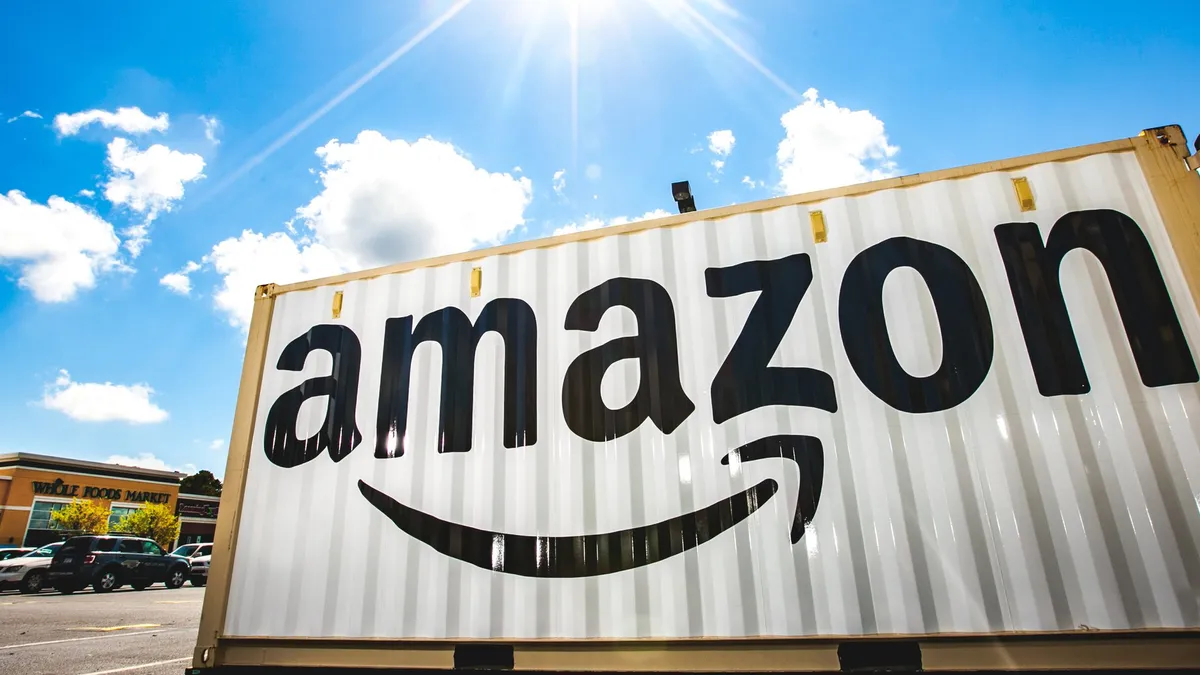Dive Brief:
- Amazon will give some workers additional pay bumps to make up for the stock options and bonuses it took away following its decision to raise wages to $15 per hour, the Seattle Times reported. The tech giant faced backlash from employees who said the cuts left them with less compensation than the new wage increase provided.
- Amazon said it's adjusting wages to ensure that warehouse workers get the pay bump they were promised when the $15 per hour minimum wage, effective Nov. 1, was announced. According to the Times, pay bumps so far have ranged from 25 cents to $2 per hour, in addition to the $1 per hour increase for workers who already earned $15 per hour. The company also plans to grant employment anniversary cash bonuses of $1,500 after five years and $3,000 every additional five years to replace the stock awards.
- Amazon also has faced criticism for the uneven way it communicated the pay adjustments internally; one employee told the Times he first learned about the increase though media reports. Amazon maintains that all employees "will see an increase in their total compensation as a result of this announcement," according to a statement given to the Times.
Dive Insight:
Amazon garnered good will — and likely competitor panic — when it raised its minimum wage to $15 per hour. The company had long drawn public criticism for its lower-wage practices; Sen. Bernie Sanders (I-VT) introduced the "Stop BEZOS" bill, which would tax corporations with 500 or more workers for the full amount workers receive in government assistance benefits. Not long after that original announcement, however, Amazon announced it was balancing the increase by cutting some of the benefits it offers to its hourly workers.
The company is far from alone in making such calculations. Walgreens recently slashed some employee benefits after announcing a pay raise package worth $100 million. Retailers, in particular, are facing a tight market for seasonal talent and may be opting for higher hourly rates to more directly attract talent. Benefits are a key offering, but for many jobs, cash is still king.
The Amazon narrative is also a story of how to manage branding. How and when organizations handle internal communication is crucial, whether it's positive, such as a wage increase, or negative, such as a layoff. News leaks to the public aren't always avoidable. But an organization's strategy should be to inform workers first and with transparency, whenever possible. The consequence of not doing so can be a drop in morale and trust at a time when employee engagement and retention should be a workplace priority.













